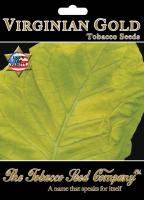
Curing, Harvesting, Air Curing, Fire Curing, Flue Curing, Fermentation and Aging
The Art and Science of Curing Tobacco: From Green Leaves to Refined Flavors
Introduction:
Curing tobacco is a vital process that transforms freshly harvested green leaves into the prized tobacco used in cigars, cigarettes, and other tobacco products. This age-old practice blends artistry with scientific precision to achieve the desired flavors and aromas. In this blog, we'll dive into the fascinating world of curing tobacco and explore the methods that turn raw leaves into the tobacco we know and love.
- The Harvesting Stage:
The curing process begins with the careful harvesting of tobacco leaves. Timing is crucial as leaves must be picked at their peak maturity to ensure optimal flavor and quality.
- Preparing for Curing:
After harvesting, the tobacco leaves are carefully sorted based on size, shape, and texture. They are then strung onto wooden sticks or hung in well-ventilated curing barns to facilitate air circulation. This is the crucial pre-curing step that allows the leaves to develop the essential qualities that will be enhanced during the curing process.
- Air Curing:
Air curing is the traditional and oldest method of curing tobacco. In this method, the tobacco leaves are hung in barns or open-air structures, where they are exposed to natural airflow for several weeks. As the leaves gradually dry, they change color from green to yellow, and eventually to a light brown. Air curing creates tobacco with a mild, sweet flavor and is often used for producing Burley and Virginia tobacco.
- Fire Curing:
Fire curing, on the other hand, is a more intense process. It involves suspending the leaves over smoldering hardwood fires, where they absorb the aromatic smoke. The heat and smoke impart a distinct smoky flavor to the tobacco, making it ideal for producing dark, rich tobaccos like Latakia, commonly used in pipe blends.
- Flue Curing:
Flue curing is a modern and controlled method that takes place in enclosed barns. These barns have heat sources connected to flues or pipes that circulate warm air around the leaves. The leaves are gradually heated, and the process is carefully monitored to prevent over-drying. Flue curing produces bright, golden-yellow leaves that are used in Virginia blends, known for their sweet and mellow flavors.
- Fermentation and Aging:
After curing, the tobacco is often subjected to a process called fermentation. During fermentation, the cured leaves are stacked in piles or placed in tightly sealed containers. This stage allows the tobacco to undergo natural chemical changes, further developing its flavor and reducing harshness. The fermented tobacco is then aged for varying periods, from several months to several years, to achieve desired mellowing and complexity.
Conclusion:
Curing tobacco is a delicate and intricate process that marries tradition with innovation. The careful selection, harvesting, and curing methods determine the ultimate flavor, aroma, and quality of the tobacco used in our favorite products. From the mellow Virginia blends to the robust Latakia-infused pipe tobaccos, each curing method contributes to the wide array of tobacco varieties enjoyed by enthusiasts worldwide. As we savor our cigars and cigarettes, let's take a moment to appreciate the art and science that goes into creating the rich and diverse world of cured tobacco.



